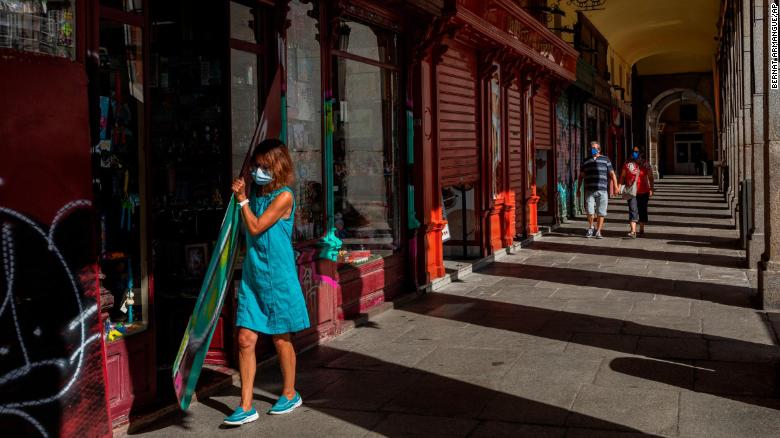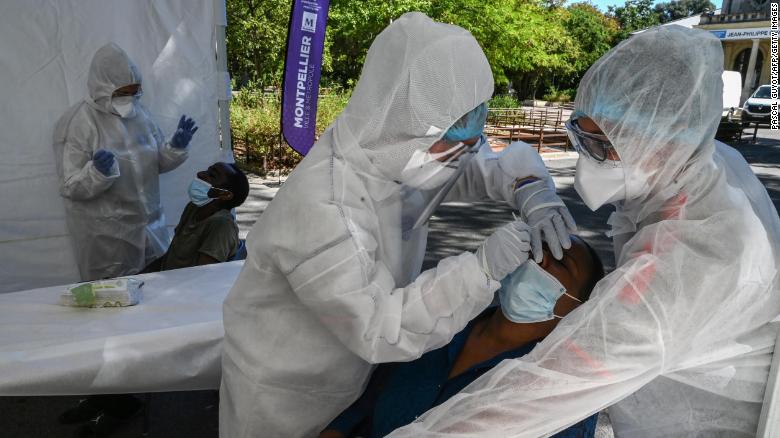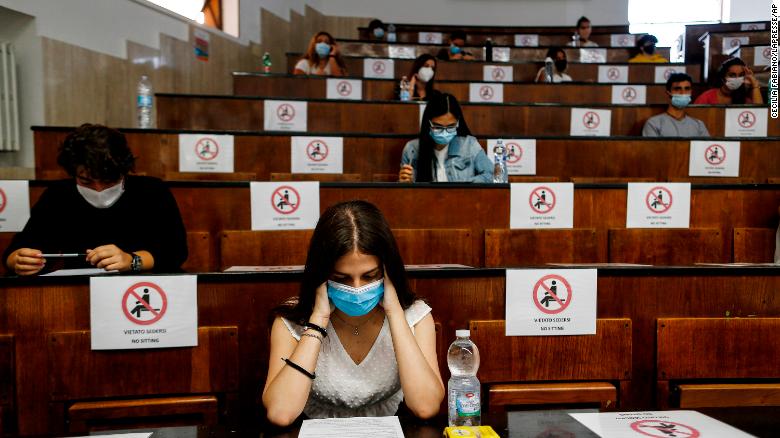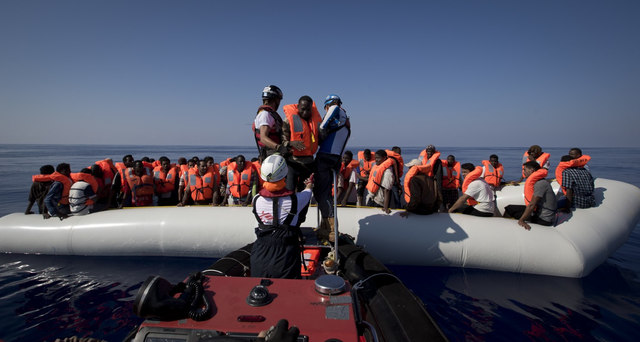CNN Coronavirus cases in Europe are “almost back” to the levels seen in March when infection rates first peaked, scientists have warned as concerns grow over a potential second wave.
Countries across the continent have been easing lockdowns and reopening restaurants, retail stores and offices in an effort to kick-start their economies. But the relaxation of restrictions has seen a surge in infections that puts Europe in a vulnerable position.
“The virus hasn’t been sleeping over the summer, so it didn’t take vacation and that is something that we see now,” Andrea Ammon, the director of the European Centre for Disease Prevention and Control (ECDC), said on Wednesday during a debate held by the European Union.
 A woman wearing a mask opens a retail store in central Madrid, Spain, on September 3, as cases surge in the region.
A woman wearing a mask opens a retail store in central Madrid, Spain, on September 3, as cases surge in the region.
She said the rise in reported infection rates had been slower than in March, when countries such as Italy and Spain were hit particularly hard by Covid-19, but had now been increasing for weeks.However, deaths in Europe are down from a seven-day rolling average of about 4,000 in early April to around 300 at the start of September, according to CNN analysis of figures from Johns Hopkins University.”
We have seen now this week that the notification rate in the EU and EEA [European Economic Area] countries and the UK is now 46 per 100,000,” Ammon said. “You may remember that at one point we have been already below 15, so there is an increase and this increase we have been seeing now for more than five weeks … We are almost back to the numbers that we have seen in March.
“In mid-August, the ECDC said that new infection clusters seemed to be tied to younger people who were venturing out into bars, restaurants and other public places.Ammon said Wednesday that the resurgence was now also being seen among older demographics. “In August … we are seeing more that also [an] older population is affected, indicating that it’s really a true increase in transmission,” she said.
 Red Cross staff take samples from a woman during a Covid-19 screening campaign in Montpellier, southern France, on September 3.
Red Cross staff take samples from a woman during a Covid-19 screening campaign in Montpellier, southern France, on September 3.
Professor Mark Woolhouse, an epidemiologist at the University of Edinburgh, told CNN that while initial lockdowns had helped to slow the rapidly escalating epidemic and bring case numbers down, “it was simply pushing the problem a few months down the line.”
“Now we’re facing the problem we had in March, that the virus is out there, it has the potential to cause a major epidemic just as it did in March; in that respect, we’re no further forward at all, we simply delayed everything,” he said.
Woolhouse said it was important to be cautious when comparing case numbers, because most countries now have far greater testing capacity than in March, but he noted that the proportion of tests coming back positive is also starting to increase.
“Out of all the indicators … that’s the one that catches my eye,” he said.”It comes back to this crucial R number [reproduction number, which indicates the spread of the virus], of whether it’s above one or below one, but in the early stages of first wave it was near three. And I simply cannot see it being allowed to get anywhere close back to that,” Woolhouse added.
 Socially distanced students take an aptitude test for the University of Medicine in Rome, Italy, on September 3.
Socially distanced students take an aptitude test for the University of Medicine in Rome, Italy, on September 3.
He added that countries now have better surveillance and can have more targeted local lockdowns, but careful monitoring is vital.”If we’re going to try and return to some form of normality, we have very little option other than to take it easy, take it cautiously, and see what happens … there is a two- or three-week lag in the system.
“Schools have recently reopened in many European countries, but Ammon said there were still “very few significant outbreaks in schools that have been documented and the evidence is really at the moment conflicting [on] whether it’s useful or not from a transmission point of view to close schools.”France, Germany, Italy have all reported their highest new case numbers in months, and Spain last week hit its record 24-hour tally for the entire pandemic.
Countries including Greece and Croatia, largely spared by the first wave, saw fast case number rises in August as tourists took summer vacations following June’s reopening of Europe’s internal borders.Governments hoping to avoid second national lockdowns have introduced new measures including nightclub closures, curfews and mandatory masks in public spaces.
But the rules have been met with mass protests in countries such as Germany and the UK.As the days grow shorter, Europe is preparing for the next phase of this ever-changing battle.






